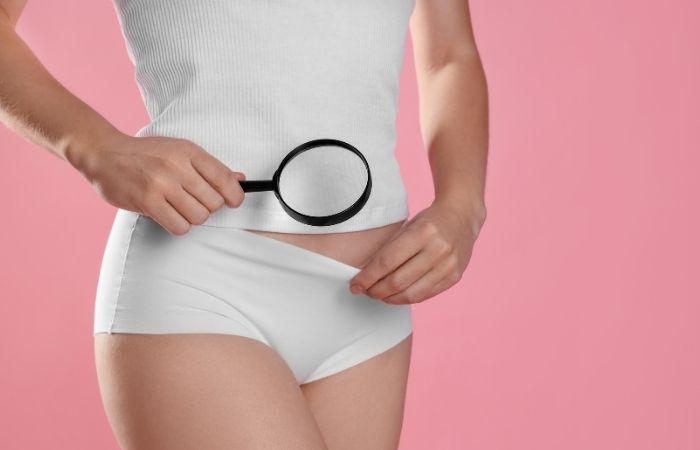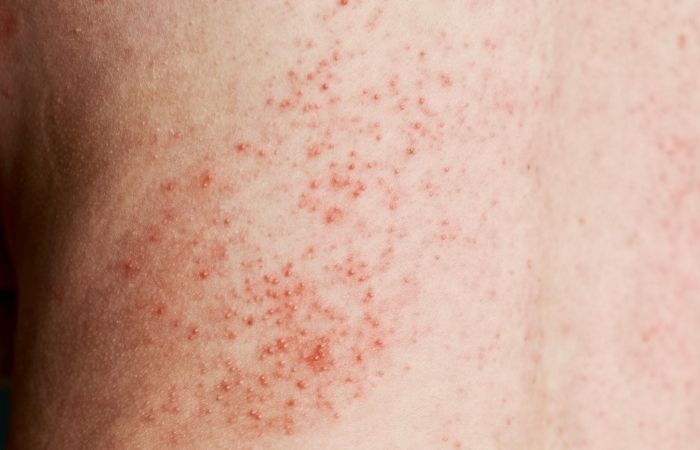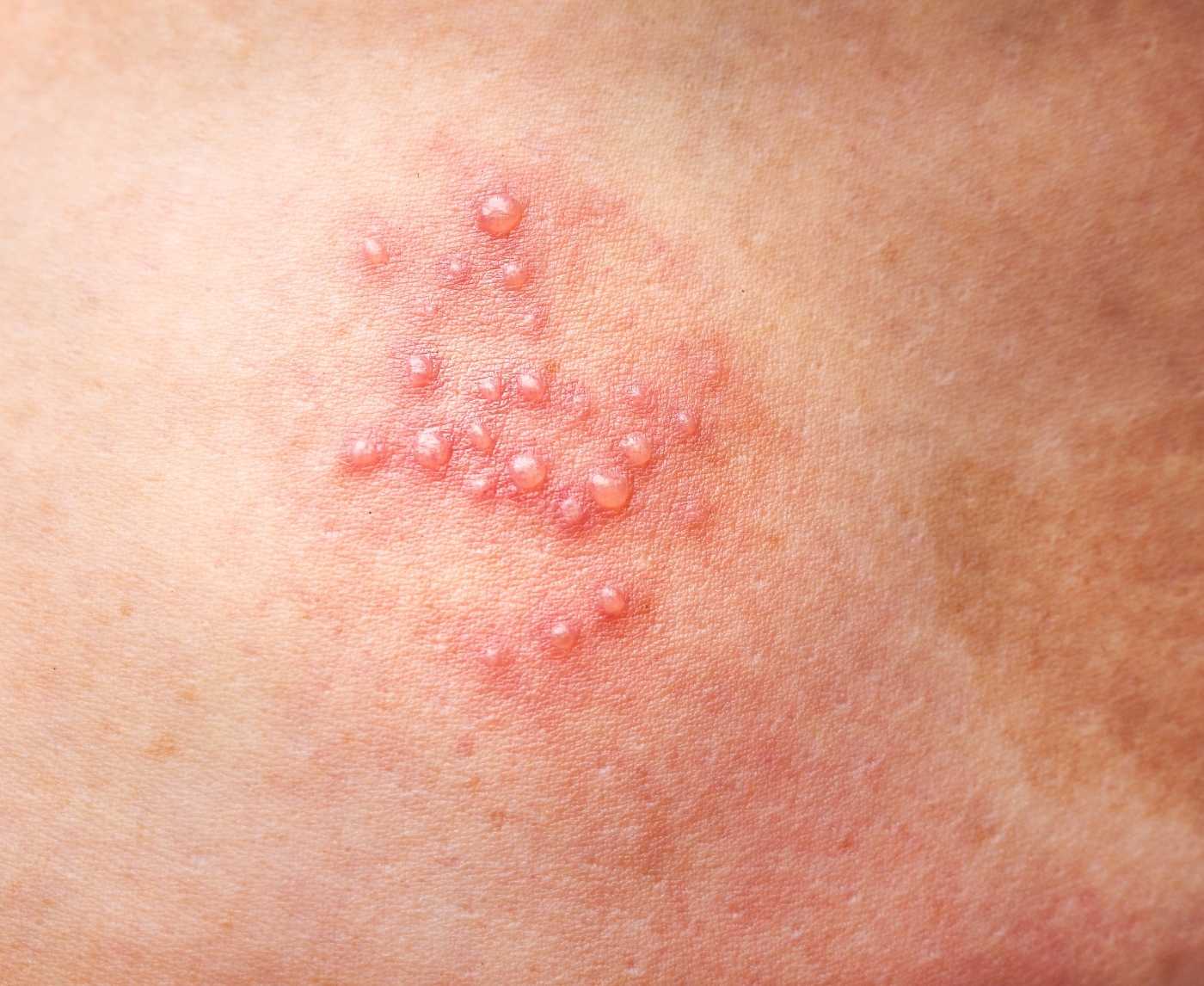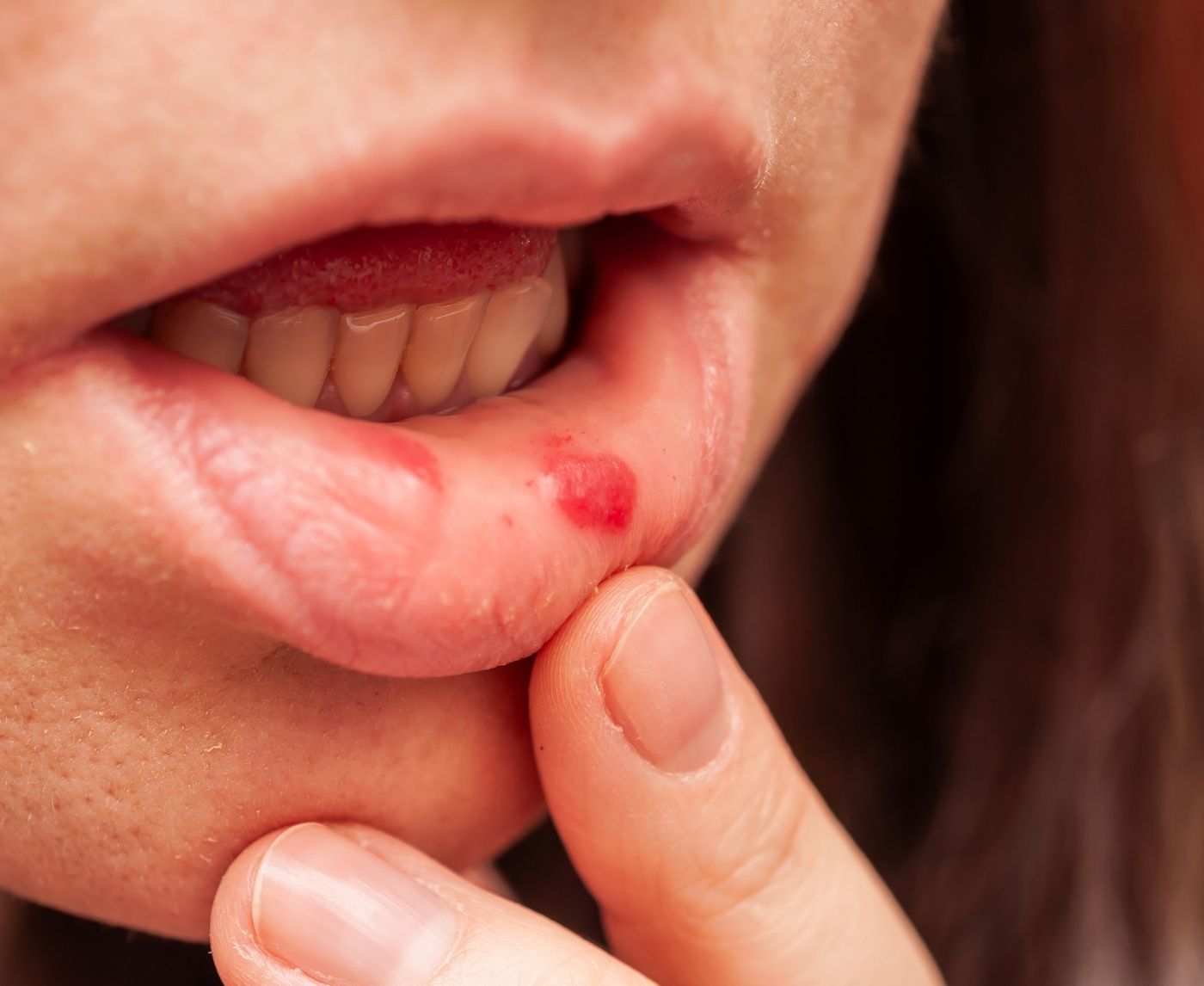Worried Your Cold Sore Is Actually Syphilis? Here’s How to Know
Quick Answer: STD bumps can look like ingrown hairs, but if a bump lasts more than a week, hurts, spreads, or leaks fluid, it may be an STD, and it’s time to test.
This Isn’t Just Razor Burn, And Here’s Why
Let’s be real: most people don’t assume they’ve got an STD when they see a bump. Especially if they’ve shaved recently, wore tight clothes, or had sex that didn’t seem risky. But that’s exactly why many STDs go unnoticed. The early signs often mimic everyday skin irritation.
Herpes can start as a single, tender bump. Syphilis often shows up as a painless sore or ulcer. Molluscum contagiosum can look like a flesh-colored pimple with a dent in the center. All of these are easily mistaken for an ingrown hair, until they spread, worsen, or start hurting more than they should.
One anonymous reader, Kira, 27, told us:
“I thought I nicked myself shaving. Then it turned into three bumps, then five. I didn’t even consider herpes until I Googled ‘ingrown hair that won’t heal.’ That’s when I panicked.”
If that sounds familiar, keep reading. We’ll help you figure out what’s normal, what’s not, and how to get clarity without shame or delay.

People are also reading: Why Nevada’s STD Surge Isn’t Just a Vegas Problem (But It Should Scare Us All)
What STD Symptoms Can Look Like Ingrown Hairs?
The overlap between skin irritation and STD symptoms is frustrating, and dangerous. Here's what some of the most common STDs can look like in their early stages:
Table 1. Several STDs cause skin changes that look like ingrown hairs, but timing, shape, and persistence can help you tell the difference.
If you're dealing with a bump that’s painful, leaking, growing, or not healing, especially if you didn’t recently shave, that’s a big red flag.
“I Left It Alone, But It Got Worse”: A Real Story
Devon, 33, assumed the small bump near his groin was from cycling or sweating in gym shorts.
“It was like a pimple, red, tiny, no big deal. I didn’t touch it. But then I felt burning when I peed and noticed another bump near it. That’s when I finally looked up herpes photos, and it clicked.”
Like Devon, many people only connect the dots once symptoms multiply or evolve. Unfortunately, that delay increases the risk of transmission and extends the anxiety.
Early testing can break the cycle. STD Test Kits offers discreet, fast testing from home, including options that detect herpes, syphilis, chlamydia, and more.
Still wondering if it’s worth testing? Let’s break down when it’s time to act.
How to Tell It’s Not Just an Ingrown Hair
An ingrown hair usually follows a predictable pattern: appears after shaving or waxing, causes mild redness or swelling, may contain a visible curled hair inside, and resolves on its own within a few days to a week. STDs? Not so simple.
Here’s what to look for instead:
Table 2. Key visual and timing clues that can help you distinguish ingrown hairs from STD-related skin symptoms.
If your bump doesn’t match the usual pattern, or if something just feels off, trust that instinct. We’ll walk you through what to do next in Part 2.
Testing After Symptoms Start: Timing Matters
If your “ingrown hair” has now turned into three bumps, or just won’t heal, timing your test right is everything. Test too early, and you might get a false negative. Wait too long, and you risk exposing others or letting the infection spread further.
Each STD has its own “window period”, the time between exposure and when a test can reliably detect infection. This is not the same as when symptoms appear. Some people get visible bumps before a test will even register anything.
Let’s say you had a risky encounter on Friday. If you test on Monday and get a negative, you still can’t rule out infection. Many rapid and lab tests aren’t fully accurate until 10–14 days post-exposure, and for some infections like syphilis, it could take even longer.
Table 3. Timing your STD test based on when you were exposed, and what’s showing on your skin, helps improve accuracy and peace of mind.
Bottom line? If you see active sores or new bumps now, swab-based tests (like the kind used for herpes) can be taken immediately. For blood-based testing, it may be wise to test now and again in a few weeks to confirm results.
Home Testing vs. Clinics: What’s the Best Route?
It can be hard to decide how to test, especially when you're looking at a bump that looks suspicious and can't decide whether to Google it again or just get it over with. In short, both home and clinic tests can be right, but they each have their own pros and cons.
Some people want to be able to test at home quickly and privately. Some people feel safer getting checked out by a provider, especially if they want to see the results. The right path for you depends on how comfortable you are, how urgent it is, and how easy it is for you to get to.
Home STD tests are private, quick, and great for people who are embarrassed or stressed out. You get your sample yourself by pricking your finger, swabbing it, or urinating on it. You can either read the results right away or send them to a lab. When done at the right time, most tests are 90% or more accurate, especially for herpes, syphilis, and chlamydia.
Visits to the clinic provide hands-on care and can directly swab active sores, but they can be scary, expensive, or hard to get to, especially in rural or stigmatized areas.
Table 4. Comparing STD testing options by privacy, speed, and situation.
Need results fast without the awkward waiting room? This at-home combo STD test kit can detect multiple common infections discreetly and quickly. It’s doctor-trusted and shipped in plain packaging.
Do I Need to Retest? Here's How to Know
Let’s say you tested negative. But that nagging bump still hasn’t gone away. Or maybe it disappeared for a few weeks, then came back. Should you test again? In many cases, yes.
If you tested too early after exposure, or only tested for one STD, you may have missed something. A single test is rarely the whole story. Especially for infections like herpes, where blood tests can take weeks to detect antibodies, or syphilis, which can be missed in early stages.
One reader, Jay, 30, shared:
“I tested negative for everything at urgent care. A week later, the same bump came back and brought a few friends. I ordered a home test and it came back positive for HSV-2. I wish I’d just trusted my gut sooner.”
If you’ve had new partners, recurring symptoms, or lingering bumps, even after a test, don’t guess. Test again. Your body is telling you something.
Red Flags That Mean “Get Tested Now”
Sometimes, a bump is just a bump. But certain signs should trigger immediate concern, especially if you’re sexually active or have been exposed recently. If you notice any of the following, don’t wait it out:
- Clusters of bumps that burn, itch, or leak
- Bump that ulcerates or develops a crater-like appearance
- Painful urination alongside skin symptoms
- Recurring bumps in the same area
- Unexplained fever or swollen lymph nodes
If even one of these applies, your best next step is to test. Not to shame yourself. Not to panic. But to get clear, fast answers so you can protect your health and your partners.

People are also reading: Cold Sore or Herpes? Why That Blister Deserves a Second Look
What No One Tells You After the Hookup
There’s a strange silence after casual sex, the kind that lingers in the weeks after, when you’re left with a nagging symptom and no script for what to do next. The person you slept with seemed clean. You used a condom (maybe). You felt fine at first. And then… that bump showed up.
Googling at 2AM becomes a ritual. Searching images. Comparing stories on Reddit. Holding up your phone flashlight in the bathroom trying to decide if it's redder than yesterday. The internet says it’s probably nothing, but also that it could be herpes. That whiplash is enough to paralyze you.
It’s in this mental fog that many people do nothing. They wait. They hope. They avoid testing because they're scared of the answer. But the truth is this: testing doesn't make it real. The infection is already there, or not. Testing just tells you what’s already true.
Why We Delay Testing
Let’s name it, shame is often the biggest barrier to early STD testing. People think, “What if I have something?” But also: “What does that say about me?”
We’ve heard every version of it:
“I’m not the kind of person who gets STDs.”
“I always use protection, except that one time.”
“I’m married. How could this even happen?”
STDs don’t care about your relationship status, number of partners, or how careful you usually are. All it takes is skin-to-skin contact. You can get herpes from oral sex. You can get syphilis through a single encounter. You can get infected by someone who doesn’t even know they’re positive.
Instead of internalizing shame, reframe it: testing is self-respect. It’s protection. It’s how you take care of future you, and anyone you touch.
Why Gender (and Genitals) Change the Game
The way symptoms show up, and how seriously they're taken, often depends on your anatomy and gender. Let’s break it down:
For people with vulvas: Herpes bumps can be hidden in the folds of the labia or internal surfaces. You might think it’s just a painful period pimple, a yeast infection, or irritation from a new soap. Many OB/GYNs still misdiagnose first-time outbreaks as folliculitis or allergic reactions.
For people with penises: Bumps may be more visible, but they’re often dismissed as “friction blisters” or shaving irritation. Herpes lesions on the shaft can look like dry skin or insect bites. If you’re uncircumcised, they may hide under the foreskin until they rupture.
Regardless of anatomy, people of all genders are conditioned to assume skin issues aren’t serious, until they are.
“I Didn’t Tell Them, And I Still Regret It”
Sasha, 24, noticed a small blister after a weekend hookup. She thought it was from friction.
“I didn’t want to be that person who accuses someone. I stayed quiet. A month later, I had another outbreak. I finally tested, it was HSV-2. I still don’t know who I got it from. But I wish I had tested right away and told them. Maybe they had it and didn’t know.”
The takeaway? Not every bump is an emergency, but silence can cause more damage than a conversation. You’re not accusing anyone by checking in. You’re protecting both of you.
What If the Test Is Positive?
Let’s say you test, and it’s not good news. That doesn’t mean your life is over. It means you now have information. And with that information, you can protect your partners, seek treatment, and avoid unnecessary fear.
Most STDs are manageable. Herpes doesn’t shorten your life. Syphilis is curable with antibiotics. HPV often clears on its own. And even if you never test positive, getting answers can give you peace that guessing never will.
What happens after a positive test?
- You may need confirmatory testing (especially if you tested early)
- You’ll be given treatment options if needed
- You’ll get guidance on when to retest and how to inform partners
- You may feel grief or guilt, but those feelings will pass
And most importantly, you’ll stop spiraling. That’s the real power of knowing.

People are also reading: Not Just a Scare: Why HIV Testing After Anal Sex Could Save Your Life
FAQs
1. Can an STD really look like an ingrown hair?
Yes, and that’s exactly why so many people delay testing. Herpes? Looks like a pimple at first. Syphilis? Just one little sore that doesn’t even hurt. If it shows up right after shaving, your brain says “razor bump.” But if it lasts more than a week, spreads, hurts, or leaks, get it checked. That’s not how ingrown hairs behave.
2. How do I know it’s not just razor burn?
Razor burn stings. Itches. Shows up fast after shaving and leaves just as fast. STD bumps? They evolve. They might start small but then blister, crust, or multiply. If you find yourself saying, “Why is this still here?” or “Why is this getting worse?”, trust that. Your skin is waving a red flag.
3. Can I really get herpes even if there were no symptoms?
Yes, and it happens all the time. Most people who have herpes don’t know it. No outbreak doesn’t mean no infection. It’s like bad Wi-Fi, just because it’s quiet now doesn’t mean it’s not there. And herpes can spread even when no visible sores are present. That’s why testing matters.
4. I tested negative. So why is this bump still here?
You might’ve tested too soon. Or for the wrong thing. Every STD has its own “window period” before it shows up on a test. A negative result on day 3 after exposure? Not very helpful. If symptoms stick around, it’s smart to retest in a few weeks, or use a different test type. One test doesn’t always tell the whole story.
5. Do those at-home tests actually work?
Yes, when you use them correctly and at the right time. Finger-prick blood tests can detect herpes or syphilis with high accuracy. Swab and urine tests pick up chlamydia and gonorrhea. The key is following instructions and not jumping the gun too early after exposure. They're not magic, but they are legit.
6. Can I have herpes and not know it?
Totally. Some people carry the virus for years without a single obvious symptom. Others get a tiny bump, write it off as friction, and never think about it again, until it comes back. Herpes is sneaky. You don’t need to have full-blown outbreaks to test positive or pass it to someone else.
7. Should I have sex while I wait for my test results?
It depends. If you’ve got visible bumps or anything unusual going on, it’s better to pause. Not forever, just until you know what you’re working with. Sex doesn’t have to stop your life, but it shouldn’t put you or anyone else at risk. Get clarity first, then go have fun.
8. How do I tell someone I might have exposed them?
It’s not easy, but it’s doable, and it doesn’t have to be dramatic. Try something like: “Hey, just a heads-up. I’m noticing a symptom and I’m getting tested. Wanted to let you know in case you want to do the same.” That’s not blame. That’s respect.
9. Can shaving cause an STD?
Not exactly, but shaving makes your skin more vulnerable. Tiny nicks and micro-tears are like open doors for infection. You don’t get herpes from the razor, but you can catch it more easily if your skin’s irritated or broken during contact. Think of it as a risk multiplier, not a cause.
10. Can I get herpes without actual sex?
Yes, yes, yes. Skin-to-skin contact is enough. Grinding, oral sex, shared toys, none of it requires penetration. Herpes doesn’t need a big event. It just needs a moment of skin-to-skin friction where the virus is active. Condoms help, but they don’t cover everything.
You Deserve Answers, Not Assumptions
If you're here, it’s because something didn’t feel right, and you trusted yourself enough to find out more. That’s powerful. Bumps happen. Skin gets weird. But your health is worth more than guesswork and hope.
Don’t let fear stop you from getting clarity. You can test discreetly, quickly, and privately from home. No clinic. No judgment. Just peace of mind.
This at-home STD test kit checks for the most common infections, including herpes and syphilis, with fast results and total privacy.
How We Sourced This Article: We combined clinical data from major medical authorities with anonymous patient stories, lifestyle publications, and peer-reviewed research. Our goal: to make this guide clear, non-judgmental, and rooted in real-world experiences. Sources include CDC guidance on herpes and syphilis, published symptom timelines, and user-reported misdiagnoses. All links open in new tabs for your convenience.
Sources
1. Ingrown Hair or Herpes: How to Tell the Difference – Healthline
2. Ingrown Hair vs. Herpes: What Are the Differences? – Everlywell
3. Ingrown Hair vs. Herpes: Symptoms, Causes, Treatment – Verywell Health
4. Ingrown Hair or Herpes: What Is the Difference? – Medical News Today
5. Genital Herpes vs Ingrown Hair – STDCheck Blog
6. Herpes vs Ingrown Hair: Differences and Treatment – K Health
About the Author
Dr. F. David, MD is a board-certified infectious disease specialist focused on STI prevention, diagnosis, and treatment. He blends clinical precision with a no-nonsense, sex-positive approach and is committed to expanding access for readers in both urban and off-grid settings.
Reviewed by: Riley Owens, NP-C, Sexual Health Nurse Practitioner | Last medically reviewed: September 2025
This article is for informational purposes and does not replace medical advice.







